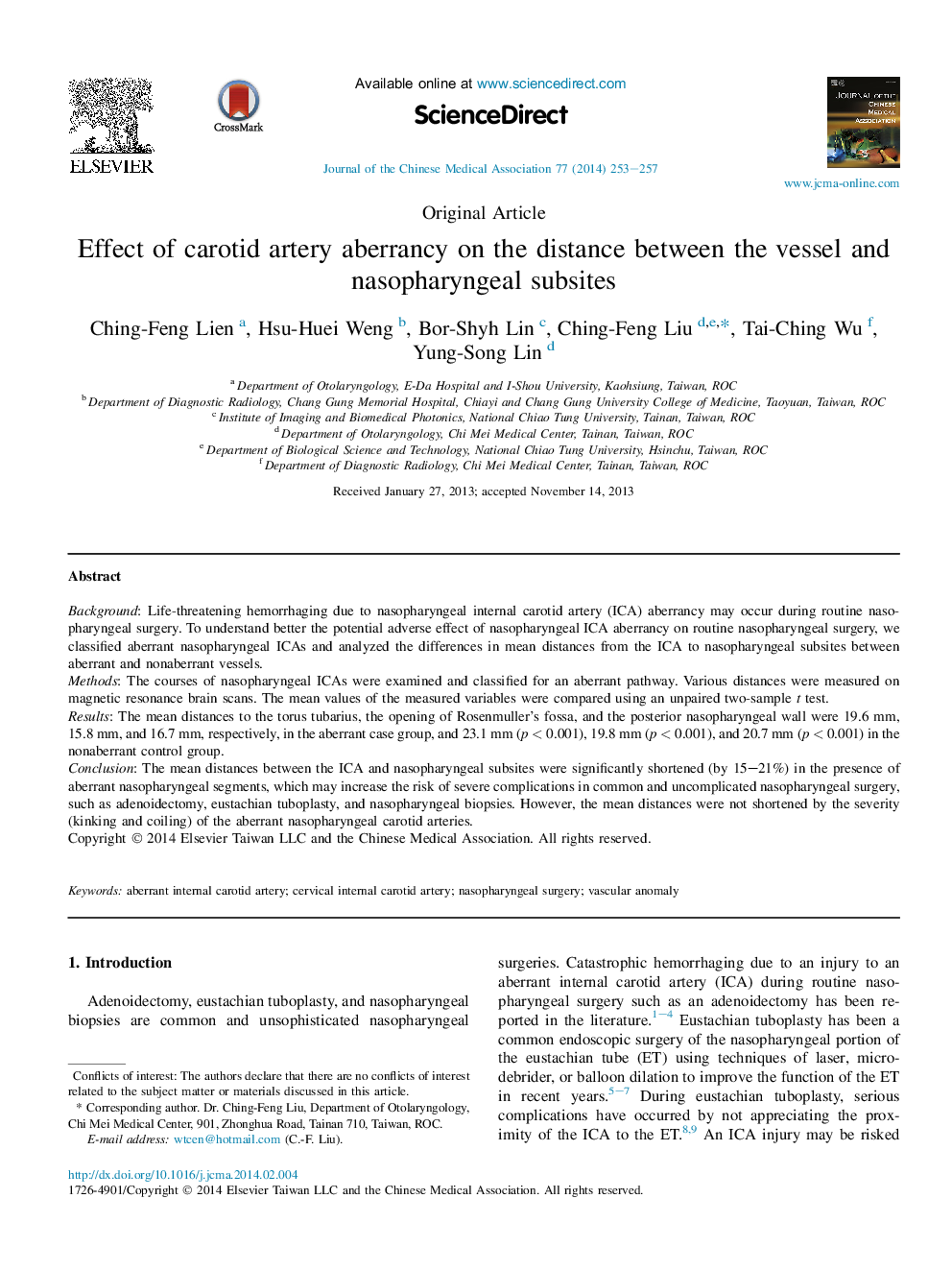| Article ID | Journal | Published Year | Pages | File Type |
|---|---|---|---|---|
| 3476378 | Journal of the Chinese Medical Association | 2014 | 5 Pages |
BackgroundLife-threatening hemorrhaging due to nasopharyngeal internal carotid artery (ICA) aberrancy may occur during routine nasopharyngeal surgery. To understand better the potential adverse effect of nasopharyngeal ICA aberrancy on routine nasopharyngeal surgery, we classified aberrant nasopharyngeal ICAs and analyzed the differences in mean distances from the ICA to nasopharyngeal subsites between aberrant and nonaberrant vessels.MethodsThe courses of nasopharyngeal ICAs were examined and classified for an aberrant pathway. Various distances were measured on magnetic resonance brain scans. The mean values of the measured variables were compared using an unpaired two-sample t test.ResultsThe mean distances to the torus tubarius, the opening of Rosenmuller's fossa, and the posterior nasopharyngeal wall were 19.6 mm, 15.8 mm, and 16.7 mm, respectively, in the aberrant case group, and 23.1 mm (p < 0.001), 19.8 mm (p < 0.001), and 20.7 mm (p < 0.001) in the nonaberrant control group.ConclusionThe mean distances between the ICA and nasopharyngeal subsites were significantly shortened (by 15–21%) in the presence of aberrant nasopharyngeal segments, which may increase the risk of severe complications in common and uncomplicated nasopharyngeal surgery, such as adenoidectomy, eustachian tuboplasty, and nasopharyngeal biopsies. However, the mean distances were not shortened by the severity (kinking and coiling) of the aberrant nasopharyngeal carotid arteries.
